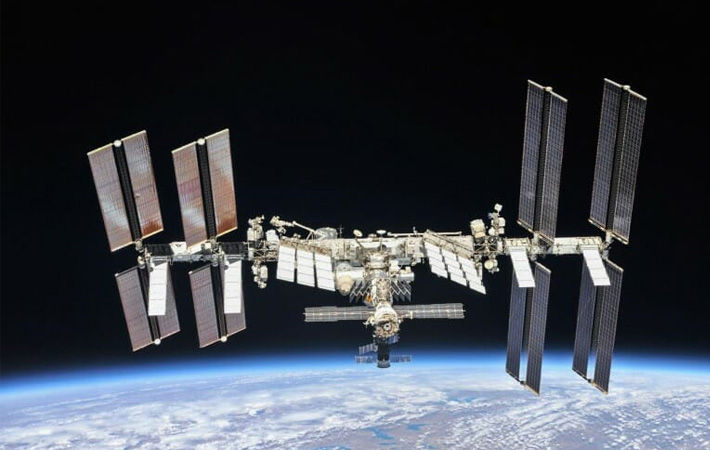Interviews
University of Wisconsin–Madison sends cotton to space for experiment
21 Jun '21
3 min read

Pic: University of Wisconsin System
The latest US SpaceX Dragon resupply spacecraft launched on June 3 is carrying cotton seeds to the International Space Station as part of the Targeting Improved Cotton Through On-orbit Cultivation (TICTOC) study. University of Wisconsin–Madison botanist Simon Gilroy has sent the seeds for experiments to improve cotton plants grown on Earth.
This is the first time that cotton will be grown in space. Gilroy’s lab will compare cotton grown in space and on Earth to try to understand how the important crop’s root system grows under the unique stresses of zero gravity.
The research, funded by Target, is designed to help scientists understand how to more efficiently grow cotton, which requires enormous quantities of water, according to a university press release.
By learning how to grow various crops in zero gravity, scientists can prepare to support longer-term space missions with fresh foods grown in flight or on other planets.
The research team prepared cotton seeds on specialised petri dishes at the Kennedy Space Centre in Cape Canaveral, Florida. The seeds were then loaded into the Dragon spacecraft and sent to the space station, where astronauts will install them into growth chambers.
The experiment focuses on improving cotton’s resilience, water-use and carbon storage. On Earth, root growth depends upon gravity. TICTOC could help define which environmental factors and genes control root development in microgravity. Scientists could use what they learn to develop cotton varieties that require less water and pesticide use, according to a NASA press release.
“Cotton uses huge amounts of water and huge amounts of nutrients. And that’s basically a root system thing. Maybe there are elements related to gravity sensing that we could tweak on Earth to redesign the root system to make it more efficient,” said Gilroy.
The seeds will germinate and grow for six days. While the seedlings are growing, astronauts will photograph their roots to capture information about their size, shape and direction of growth. Once the experiment ends, astronauts will freeze the seedlings and prepare them for delivery back to Earth. On the ground in Florida, the Gilroy lab will perform an identical experiment.
Back in Madison, the researchers will be able to compare the patterns of root growth and the expression of different root-related genes between space- and land-grown plants to suss out how zero gravity affected the seedlings.
The experiment will include two kinds of cotton.
“We’re flying regular cotton, but we’re also flying cotton that is genetically engineered to produce a protein that, on Earth, makes cotton more resilient to a big spectrum of stresses. That protein on Earth is switched on under low-oxygen environments. Our prediction is that the overexpression line will grow better in space,” added Gilroy.
This is the first time that cotton will be grown in space. Gilroy’s lab will compare cotton grown in space and on Earth to try to understand how the important crop’s root system grows under the unique stresses of zero gravity.
The research, funded by Target, is designed to help scientists understand how to more efficiently grow cotton, which requires enormous quantities of water, according to a university press release.
By learning how to grow various crops in zero gravity, scientists can prepare to support longer-term space missions with fresh foods grown in flight or on other planets.
The research team prepared cotton seeds on specialised petri dishes at the Kennedy Space Centre in Cape Canaveral, Florida. The seeds were then loaded into the Dragon spacecraft and sent to the space station, where astronauts will install them into growth chambers.
The experiment focuses on improving cotton’s resilience, water-use and carbon storage. On Earth, root growth depends upon gravity. TICTOC could help define which environmental factors and genes control root development in microgravity. Scientists could use what they learn to develop cotton varieties that require less water and pesticide use, according to a NASA press release.
“Cotton uses huge amounts of water and huge amounts of nutrients. And that’s basically a root system thing. Maybe there are elements related to gravity sensing that we could tweak on Earth to redesign the root system to make it more efficient,” said Gilroy.
The seeds will germinate and grow for six days. While the seedlings are growing, astronauts will photograph their roots to capture information about their size, shape and direction of growth. Once the experiment ends, astronauts will freeze the seedlings and prepare them for delivery back to Earth. On the ground in Florida, the Gilroy lab will perform an identical experiment.
Back in Madison, the researchers will be able to compare the patterns of root growth and the expression of different root-related genes between space- and land-grown plants to suss out how zero gravity affected the seedlings.
The experiment will include two kinds of cotton.
“We’re flying regular cotton, but we’re also flying cotton that is genetically engineered to produce a protein that, on Earth, makes cotton more resilient to a big spectrum of stresses. That protein on Earth is switched on under low-oxygen environments. Our prediction is that the overexpression line will grow better in space,” added Gilroy.
Fibre2Fashion News Desk (DS)
Popular News
Leave your Comments
Editor’s Pick
































-Ltd..jpg?tr=w-120,h-60,c-at_max,cm-pad_resize,bg-ffffff)





.jpg?tr=w-120,h-60,c-at_max,cm-pad_resize,bg-ffffff)
.jpg?tr=w-120,h-60,c-at_max,cm-pad_resize,bg-ffffff)






